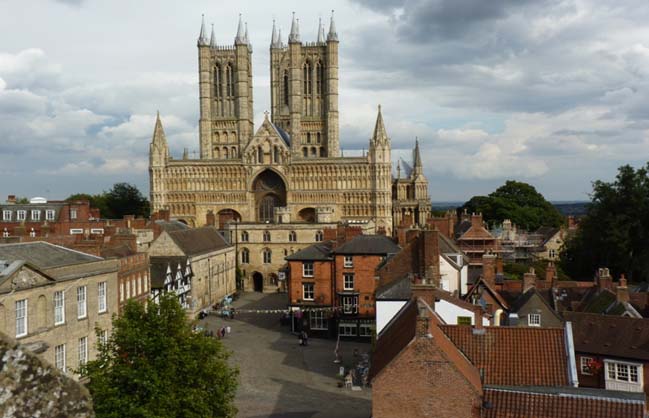
The Bare Bones of the Story of King John and Magna Carta
Sir William de Mowbray sided with those who revolted against King John in 1215 and was one of the twenty-five leading barons appointed to enforce the provisions of Magna Carta.
King John reneged on his promises and civil war broke out before this could be done. One of only four survivors of the original copies of the 1215 Magna Carta can be found in Lincoln Castle; there are two in the British Library and the fourth is in Salisbury Cathedral.
When King John died the reason for the unrest should have died with him, but William de Mowbray and like-minded barons continued to give their support to Louis of France who was claiming the throne in preference to the child Henry III, King John’s nine-year-old son.
Your summary of the provisions of Magna Carta really helped me with my project. Thank you. Liverpool Student
A little gold mine. A purchaser at one of the Magna Carta talks.
28 pages
2 charts
2 family trees
15 colour photographs
Bibliography
TO ORDER KING JOHN and MAGNA CARTA
King John and Magna Carta
£5.00 PLUS Postage & Packing
We can send worldwide.
To calculate postage and packing costs
Please contact info@queens-haven.co.uk

COVER STORY
THE SCENE ON THE KING JOHN AND MAGNA CARTA COVER
King John watched by the rebel barons at Runnymede, June 15th 1215. Magna Carta was authenticated by applying the Great Seal of England, and not by King John signing it, as is depicted in the engraving by James William Edmund Doyle, 1864.
Further versions of ‘The Great Charta’ followed in the reign of John’s son Henry III in 1216, 1217 and 1225, and again in 1297 in the reign of Edward III.
Sir William de Mowbray, one of the 25 Sureties of 1215, was among those who in May 1217 fought for the Dauphin of France in a battle in the streets of Lincoln against king John’s successor; had the French candidate been victorious England’s history would have taken a different course.

View from the battlements of Lincoln Castle looking towards the Cathedral. It was here in the open space between them that the battle was fought for the English throne between supporters of King John’s son Henry III and the Dauphin of France in May 1217. The red brick building in the centre is a pub appropriately named Magna Carta. © Marilyn Roberts 2015
